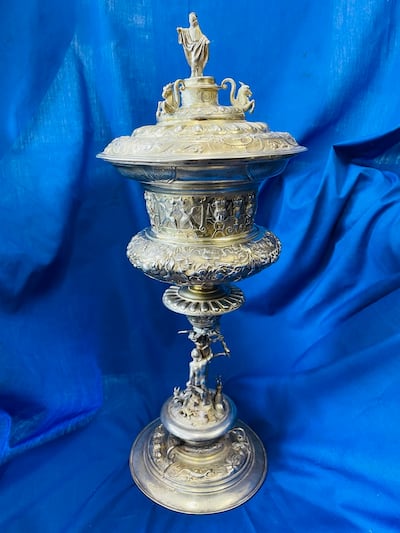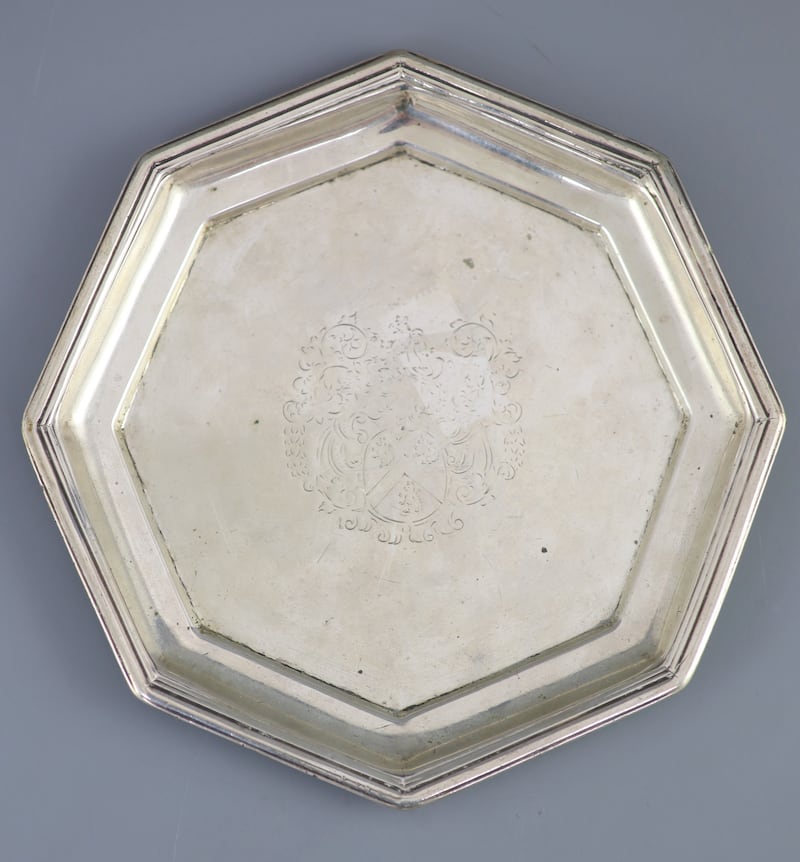“In my humble opinion, this is one of the finest items to come to auction in Ireland in recent times,” says Patrick O’Donovan of O’Donovan Auctioneers in Co Limerick, of lot 534 in its auction on May 15th and 16th.

The contents from a prominent Killarney residence, 90 per cent of which are without reserve, include an 18th-century ornate Chinese teapot (€400-€600) and the lot that O’Donovan is particularly excited about – an Augsburg silver chalice, which has an associated cover with a gilded interior.

The impressive, profusely decorated piece is hallmarked for Augsburg and conjoined HL, which O'Donovan presumes to be of Hans Lenker dating from about 1650 making the piece almost 400 years old.
In Roman times, when the German city was a free industrial city within the Roman empire, the pine cone – the city’s emblem – was said to signify eternity. Curiously Augsburg has the oldest stained glass in the world – dating from 1140 – located in its cathedral, and also has the oldest social housing complex in the world dating from 1516. Known as the Fuggerei after the noble Fugger family, who dominated European banking in the 16th century, the family also owned the largest mining company in Europe, and the Habsburg dynasty rose to power primarily though the financial support of the Fugger family.
Silver for nobility
From their mines which were located all over Europe, copper was sent to Lisbon, for weapons and ships and for trade with Africa and India, while silver was primarily used for nobility for minting coins. While the city grew with the Fugger family’s bank, it was also shaped by its trade in silver objects. By the first half of the 17th century, the city was pivotal in a European network of gold and silversmiths who became master craftsmen.
Little is known about how this chalice ended up in Co Kerry, but it is sure to attract interest due to its craftsmanship, age and links to Augsburg (€4,000-€6,000).

Another recently-discovered treasure is a Galway silver octagonal dish dating from about 1712, of which antique dealer Jimmy Weldon says:
“In my almost 60 years handling fine silver, this is the most extraordinary piece, an item of immense rarity and sublime quality.
“Galway silver is immensely rare, and domestic pieces are even rarer.”
The dish was made by Mark Fallon, who was a working partner of Richard Joyce, the renowned Galway silversmith who is credited with the modern design of the Claddagh ring in 1690. Dating from 1712, the armorial on the dish is of the Skerritt family, one of the 13 tribes of Galway, and the dish is engraved on the reverse WSM, likely for the marriage of William and Mary Skerritt. The dish is expected to fetch in the region of €60,000, and will be on view at the Hibernian Fairs when they resume, unless previously sold by Weldon.










